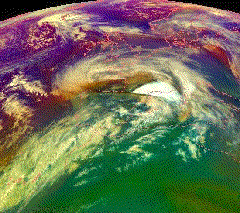
by Bob Lento, Convergys
You would think support for the smart grid would be unanimous. Research shows that many consumers want to reduce their negative impact on the environment and take a more active role in personal energy management.
The Department of Energy awarded $3.4 billion in stimulus funds to 100 smart grid projects. According to the latest data from GTM Research, the market for smart grid technology will reach $9.6 billion by 2015. Meanwhile utility companies themselves stand to save billions in peak hour energy production costs by influencing consumers to even out their energy use. Government, consumers, utilities, and tech companies are all winners, so we should all be on the same team, right ? Wrong.
The moment smart grid implementations actually went into place, a wave of chaos ensued. Lawsuits were filed, government investigations were launched, and official consumer complaints to organizations like the California Public Utilities Commission stacked up.
Many expensive smart grid projects were put on hold, government agencies started holding utility companies' feet to the fire on new pricing plans, the growth in tech spending slowed, and consumers became suspicious that utility companies were using the smart grid as an excuse to print out false readings on energy use and overcharge them. So far, not a single investigation has found that any of the millions of deployed smart meters are giving incorrect measurements. Rather, the issue is how consumers use their smart meters. Many people don't really understand how a smart meter works and how it and a corresponding smart rate plan can save them money - if they make an effort to change the way they consume energy.
This issue has given rise to task forces for consumer education, like the Silicon Valley Smart Grid Task Force, which aims to educate the public on the smart grid in an effort to improve acceptance. We applaud these efforts but also realize that when a consumer receives an unexpected $500 energy bill, no amount of education will change his or her immediate disdain for the smart grid.
The situation is analogous to the wireless communications industry, which has had a real-time information network connected to all the devices that use bandwidth from the beginning. Just as they came up with "free nights and weekends" to push bandwidth use off of peak hours, utility companies must now develop and secure approval of their own variable rates to influence when consumers use energy and reduce costs.
A once-per-month bill however, will only elicit anger rather than persuade consumers to shift their energy use away from peak hours. Telecommunications providers have had to cope with "sticker shock" for a long time. When billing becomes complex, like it can with any variable rate plan, consumers don't realize how much peak-hour usage they've purchased or they lose track of how long they were on that overseas call. Certainly, there are plenty of stories of someone who was surprised to receive a $500 wireless bill.
To overcome sticker shock and enlist trust in telecom customers, we started educating them on the pricing scheme at the beginning - but far more than that, we gave them real-time alerts, messages, charts, updates, the works. Customers receive text messages when their minutes are running out, they can check up on their bill online at any time, or access their latest charges on a smart device. They can even set their communications preferences to receive a summary of the duration and cost of every call immediately after they hang up.
Utilities have been on a once-per-month billing cycle since electricity became popular in the era of Thomas Alva Edison. So it's no surprise that despite the introduction of a real-time information network to the electric grid, many energy providers have yet to consider the customer-friendly communications options made available by real-time billing. It will take time to learn, but we can jump-start the process by taking a lesson from telecommunications.







 136Ko
136Ko













 The Climate and Energy Project has experimented with motivating locals in conservative, Bible-belt Salina, Kansas, by emphasing thrift, patriotism and spiritual conviction instead directly evangelizing on its mission to cut greenhouse gas emissions to halt global warming. That may be good use of rhetoric, but it raises questions about ethics, honesty and transparency. Our columnist explores the issue of telling people what they want to hear, regardless of why you're telling them something.
The Climate and Energy Project has experimented with motivating locals in conservative, Bible-belt Salina, Kansas, by emphasing thrift, patriotism and spiritual conviction instead directly evangelizing on its mission to cut greenhouse gas emissions to halt global warming. That may be good use of rhetoric, but it raises questions about ethics, honesty and transparency. Our columnist explores the issue of telling people what they want to hear, regardless of why you're telling them something. 
 Dans un
Dans un 

 EBEvie est un outil Internet conçu par le ministère du Développement durable pour permettre aux entreprises d’auto-évaluer leurs interactions avec la biodiversité. Les entreprises peuvent ainsi mesurer les impacts positifs ou négatifs de leurs activités sur la biodiversité, leurs liens de dépendance avec les services rendus par les écosystèmes ainsi que les risques et opportunités qui en découlent.
EBEvie est un outil Internet conçu par le ministère du Développement durable pour permettre aux entreprises d’auto-évaluer leurs interactions avec la biodiversité. Les entreprises peuvent ainsi mesurer les impacts positifs ou négatifs de leurs activités sur la biodiversité, leurs liens de dépendance avec les services rendus par les écosystèmes ainsi que les risques et opportunités qui en découlent.





Les commentaires récents